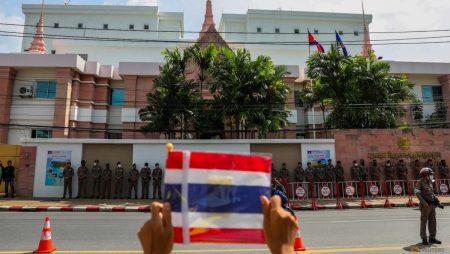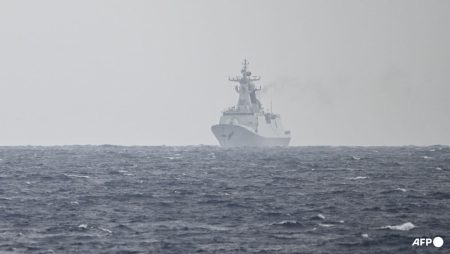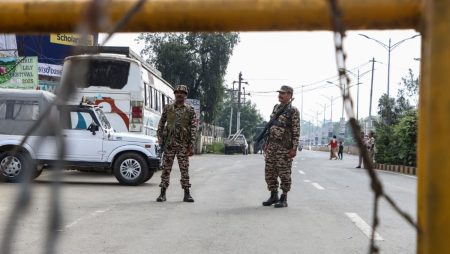The landscape of human trafficking in Indonesia has undergone a disturbing transformation, marked by a shift in both victim demographics and destination countries. While previously, traffickers primarily targeted individuals with limited education and economic opportunities, often luring them with promises of lucrative employment abroad, a new trend has emerged: the exploitation of young Indonesians with higher education. This signifies a departure from the traditional profile of trafficking victims and highlights the increasingly sophisticated tactics employed by criminal networks. These individuals, often possessing degrees and professional aspirations, are now falling prey to deceptive recruitment schemes that exploit their desire for career advancement and financial stability. This shift underscores the evolving nature of human trafficking, emphasizing that education and socio-economic status no longer provide immunity from this insidious crime.
The geographical focus of trafficking operations has also experienced a significant change. Previously, a substantial number of Indonesian trafficking victims were sent to countries in the Middle East, particularly for domestic work. However, recent observations indicate a growing trend of trafficking within Southeast Asia itself. This regional shift is likely influenced by several factors, including the increasing economic opportunities within the region, the relative ease of movement across porous borders, and the perception of lower risk associated with intra-regional trafficking compared to international operations. The proximity and cultural similarities within Southeast Asia may also create a false sense of security for victims, making them more susceptible to deceptive recruitment tactics. Furthermore, the expanding economies and growing labor demands within Southeast Asia provide fertile ground for traffickers to exploit vulnerable individuals seeking better prospects.
The shift in victim demographics and destination countries necessitates a re-evaluation of anti-trafficking strategies. Traditional approaches that primarily focused on protecting individuals with limited education may no longer be sufficient. The new reality demands a more nuanced and comprehensive approach that addresses the specific vulnerabilities of educated youth. This includes raising awareness about the deceptive recruitment tactics employed by traffickers, promoting media literacy to critically evaluate job offers, and strengthening collaboration between educational institutions, government agencies, and civil society organizations to provide comprehensive protection and support services. Furthermore, greater emphasis must be placed on investigating and prosecuting trafficking networks operating within Southeast Asia, dismantling their operations, and holding perpetrators accountable.
The increasing exploitation of educated youth in Southeast Asia also highlights the role of economic disparities and the allure of seemingly lucrative opportunities. While education can empower individuals, it does not automatically shield them from economic pressures and the desire for upward mobility. Traffickers often capitalize on these aspirations, presenting seemingly legitimate job offers with attractive salaries and benefits, masking the exploitative nature of the work. Addressing the root causes of vulnerability, such as economic inequality and limited access to decent work opportunities, is crucial in preventing human trafficking. This requires promoting sustainable economic development, creating decent jobs, and ensuring fair wages and working conditions, thereby reducing the susceptibility of individuals to deceptive recruitment schemes.
The evolving nature of human trafficking demands enhanced regional cooperation among Southeast Asian countries. The porous borders and interconnected economies of the region facilitate the movement of traffickers and their victims. Strengthening cross-border collaboration, including information sharing, joint investigations, and coordinated law enforcement operations, is vital to disrupting trafficking networks and bringing perpetrators to justice. Harmonizing legal frameworks and anti-trafficking legislation across the region can also enhance the effectiveness of law enforcement efforts and ensure that traffickers cannot exploit legal loopholes or jurisdictional differences. Furthermore, promoting regional initiatives focused on victim identification, protection, and reintegration is essential to providing comprehensive support and ensuring the long-term well-being of survivors.
In conclusion, the shifting landscape of human trafficking in Indonesia, marked by the targeting of educated youth and the increasing prevalence of intra-regional trafficking within Southeast Asia, necessitates a comprehensive and adaptive response. This requires not only addressing the immediate vulnerabilities of potential victims but also tackling the underlying socio-economic factors that contribute to their susceptibility. Strengthening regional cooperation, enhancing law enforcement efforts, and promoting awareness and education are crucial components of an effective anti-trafficking strategy. By understanding the evolving dynamics of this crime, we can develop more targeted interventions to protect vulnerable individuals, dismantle trafficking networks, and ultimately eradicate this modern form of slavery. The continued evolution of trafficking tactics emphasizes the need for constant vigilance and adaptation in the fight against this pervasive crime. Only through sustained and collaborative efforts can we effectively combat this evolving threat and ensure the safety and well-being of individuals across the region.









